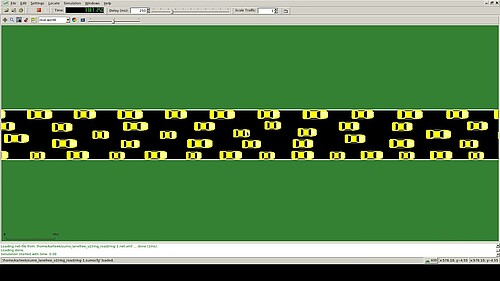Video Playlist 10. Optimal path planning for connected and automated vehicles in lane-free traffic
The videos are part of the results discussed in the journal paper titled “Optimal path planning for connected and automated vehicles in lane-free traffic with vehicle nudging”. This is an enhanced and extended version of the approach and results presented in the extended abstract titled "Lane-free traffic with connected and automated vehicles - An optimal control approach", presented at Tristan-2022 and the conference paper titled "Optimal path planning for connected and automated vehicles in lane-free traffic". The camera is tracking a vehicle shown with the mouse pointer on a ring road of 1 km length. It is assumed that the ring road is unfolded for the simulation purpose. In each lap, it appears as if vehicles exit the road at 1 km and re-enter the road at 0 km. All the vehicles start from zero speed and try reaching their desired speeds, which range [25, 35] m/s. Videos are recorded for the last ten minutes of one hour simulations, played at 4x speed. All the simulations and generation of videos are performed on SUMO simulator along with custom build lane-free en-vironment. The vehicles try to achieve a running desired speed at each planning horizon as described in the paper. Movement trajectories are obtained by solving an optimal control problem in a model predictive control framework. The objectives of the vehicles include safe and comfortable driving while trying to achieve the fixed desired speed.
Vehicle movement at 100 veh/km density
The particular vehicle being tracked by the camera has a high desired speed and tries to achieve and maintain its desired speed, while manoeuvring over the complete lateral space. It can be observed that the vehicle movement is fairly smooth.
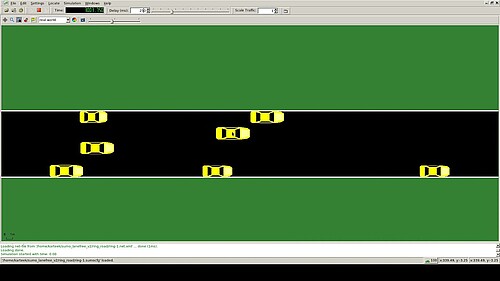
Vehicle movement at 150 veh/km density
The particular vehicle being tracked by the camera tries to achieve and maintain its desired speed, but this is not always possible due to higher density (compared to the case of 100 veh/km). For half of the display time, the vehicle joins a vehicle platoon at the left road boundary. At given occasion, the vehicle exits the platoon in an attempt to increase its speed via appropriate manoeuvring over the lateral space. It can be observed that the vehicle movement is fairly smooth.
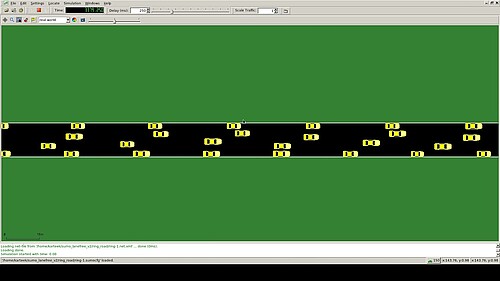
Vehicle movement at 200 veh/km density
Due to increased density, speed differences among vehicles are smaller, compared to previous Videos. Two full vehicle platoons are formed at both road boundaries, which allows efficient road width exploitation; while other vehicles are seen to drive slightly faster inbetween.The particular vehicle being tracked by the camera moves between the two platoons with reasonable speed thanks to appropriate manoeuvring over the limited lateral space. It can be observed that the vehicle movement is fairly smooth. Note that total flow at this density attains a maximum value (capacity).
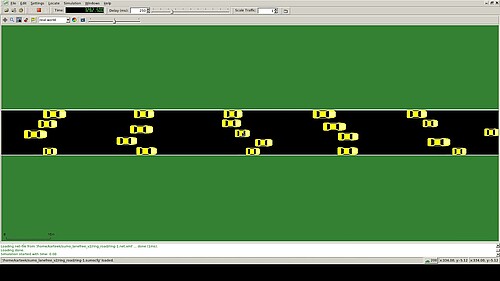
Vehicle movement at 250 veh/km density
The situation is similar to the case of 200 veh/km, albeit with slightly lower speed and farther reduced range for manoeuvring due to higher density.
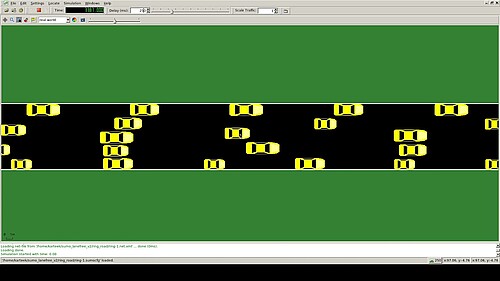
Vehicle movement at 300 veh/km density
The situation is similar to the case of 250 veh/km, albeit with lower speed and farther reduced range for manoeuvring due to higher density. Note that no stop-and-go waves (traffic instability) are observed.
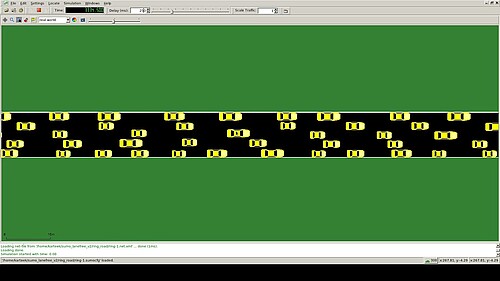
Vehicle movement at 400 veh/km density
The situation is similar to the case of 250 veh/km and 300 veh/km, albeit with lower speed and farther reduced range for manoeuvring due to higher density. Note that no stop-and-go waves (traffic instability) are observed.
